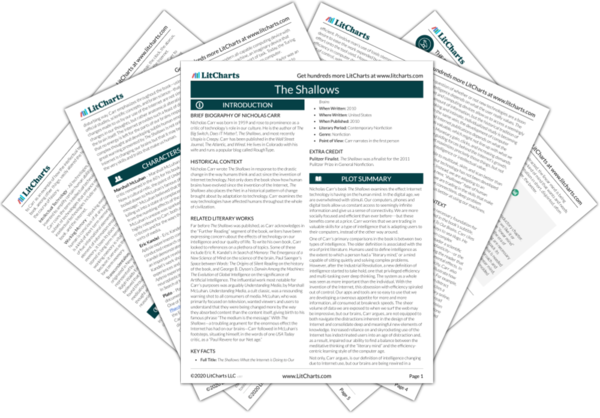Here Carr makes his final appeal to the reader. His entire book has worked towards a singular warning: under the guise of progress, essential parts of our humanity are being lost. Having established that humanity’s essence is located in our ability to complete tasks with quiet minds and meditative, creative thinking––in other words, to complete tasks with wisdom––the reader can see that a new definition of intelligence as calculative has usurped the older, “literary” view of identity. Carr’s scientific context, historical patterning, and spiritual analysis culminate in the chilling conclusion that the Internet is not only changing our brains; it is also changing our identities, and there may be little we can do to stop it.
